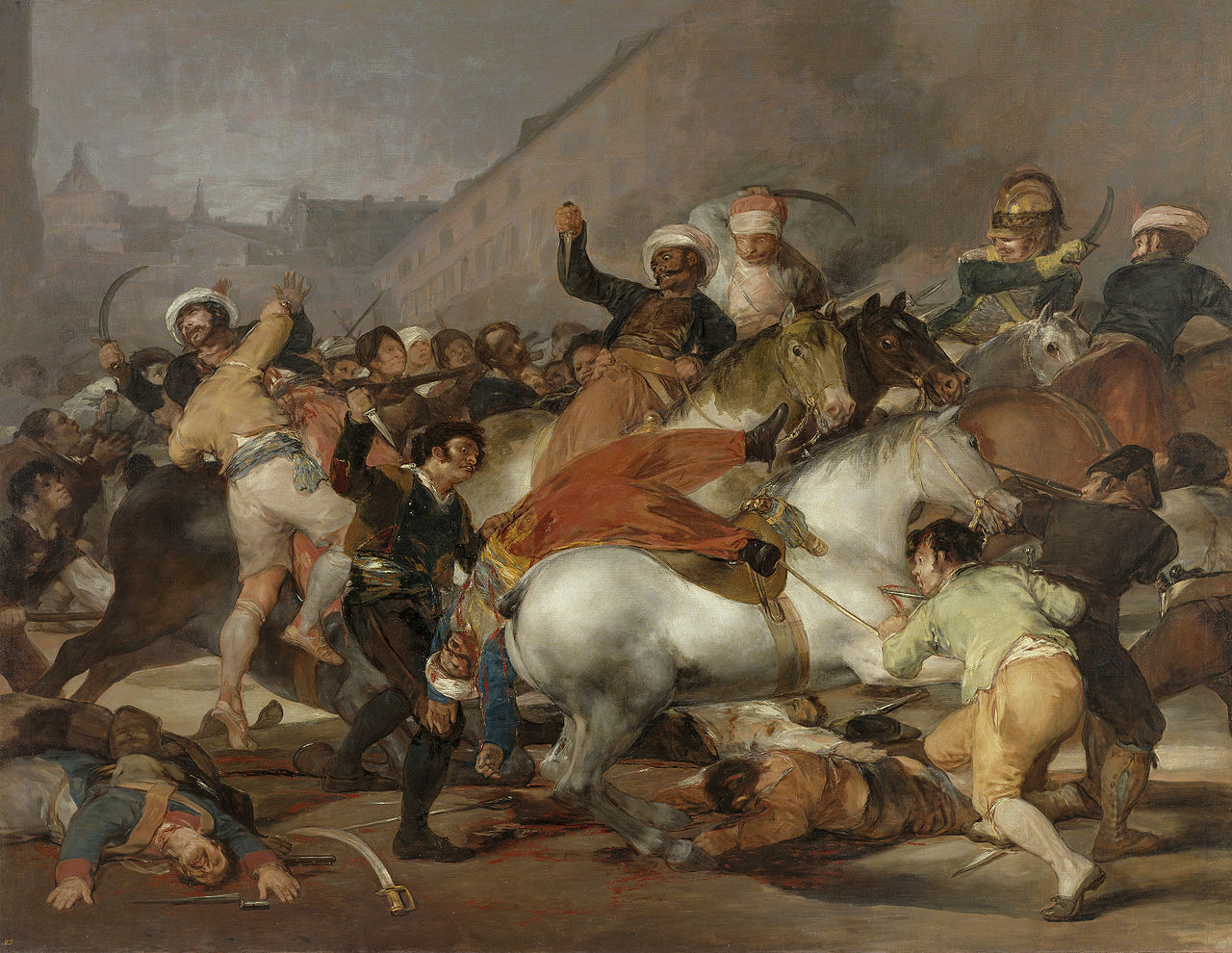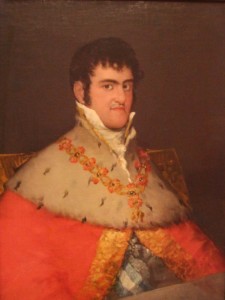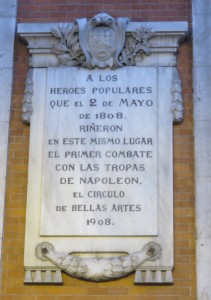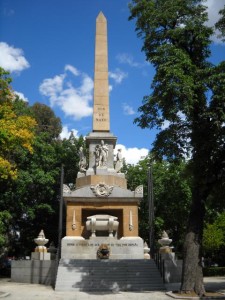
When you’re visiting Madrid, it’s painful to be an admirer of Napoleon Bonaparte.
It’s similar to how I felt on my visit to Vietnam when I heard the Vietnam War called “the War of American Aggression.” In Madrid, what I know as “the Peninsula War” became “the War for Spanish Independence.” History’s a matter of perspective, isn’t it? You can find heroes and villains on all sides, and enough conflicting justification to make your head spin. In this case, the evidence seems clear: the British and the French used the Iberian Peninsula as a convenient place to stage a war.
My January 2015 post, “Finding Napoleon in Richmond and Spain,” provides a historical snapshot of this conflict. Here’s a bit more backstory:
provides a historical snapshot of this conflict. Here’s a bit more backstory:
By 1808, the corrupt reign of Spain’s Carlos IV had been cut short through a coup by his equally corrupt son, Ferdinand VII (seen here in a painting by Francisco Goya). Carlos IV fled to France, seeking Napoleon’s support. Wily Napoleon lured Ferdinand into negotiations on French soil where he strong-armed the feuding family into ceding their throne to him. Napoleon then turned Spain over to his brother Joseph. There are, of course, more twists to this story, but that’s the short edition.
 Joseph Bonaparte, although reluctant, thought he might do some good as Spain’s monarch. He barged in with ideas for a modern constitution and decreed an end to the Inquisition. But before he’d even set foot in his new realm, the Spanish populace was in revolt.
Joseph Bonaparte, although reluctant, thought he might do some good as Spain’s monarch. He barged in with ideas for a modern constitution and decreed an end to the Inquisition. But before he’d even set foot in his new realm, the Spanish populace was in revolt.
On the 2nd of May, 1808, Spanish patriots fired on French troops in the heart of Madrid. This plaque in the Puerta del Sol plaza commemorates the first shots. Goya’s painting (above) of “The Charge of the Malmalukes,” shows Spaniards attacking Napoleon’s soldiers on that date. Perhaps this French regiment, in its fancy Arab dress and comprised of Muslims and Christians alike, incensed the devoutly Catholic Spaniards. The melee cost hundreds of lives on both sides.
 Goya captured the next day’s events in his most famous painting, “The Third of May.” On that day, Napoleon’s forces took revenge with hundreds of executions. Today, the “The Charge of the Malmalukes” and “The Third of May” hang side by side in the Prado Museum.
Goya captured the next day’s events in his most famous painting, “The Third of May.” On that day, Napoleon’s forces took revenge with hundreds of executions. Today, the “The Charge of the Malmalukes” and “The Third of May” hang side by side in the Prado Museum.
So began the first “guerrilla warfare,” the Spanish people’s asymmetrical fight against the well-equipped Napoleonic army. After atrocities on both sides, it took the British under Arthur Wellesley, the future Duke of Wellington and Napoleon’s nemesis at Waterloo, to clear the French from Spain.
Just as we Americans remember the Minutemen of Lexington and Concord, the Spanish haven’t forgotten the patriots who started their War for Independence. One block from the Prado, in Madrid’s Plaza de la Lealtad (the Plaza of Loyalty), they buried their bodies and burn an Eternal Flame.

This post reminded me of an extract from Laurie Lee’s wonderful As I Walked out One Midsummer Morning – an account of a walk across Spain in the 1930’s.
Another man nearby suddenly spun round upon me and thrust his red butcher-face at mine.
‘
Long Live Spain and Germany” he said, raising his fist. ‘Death to America! And long live Napoleon!’
‘Napoleon’s dead,’ I said primly.
He gave me a cunning look.
‘Oh, no; we believe he’s alive.’ He raised his fist again. ‘But death to France too! and if you’re a Frenchman, excuse me ..’
Make of that what you will! Best wishes
John
Pingback: Finding Napoleon Bonaparte in Madrid – Part 2 - Finding Napoleon